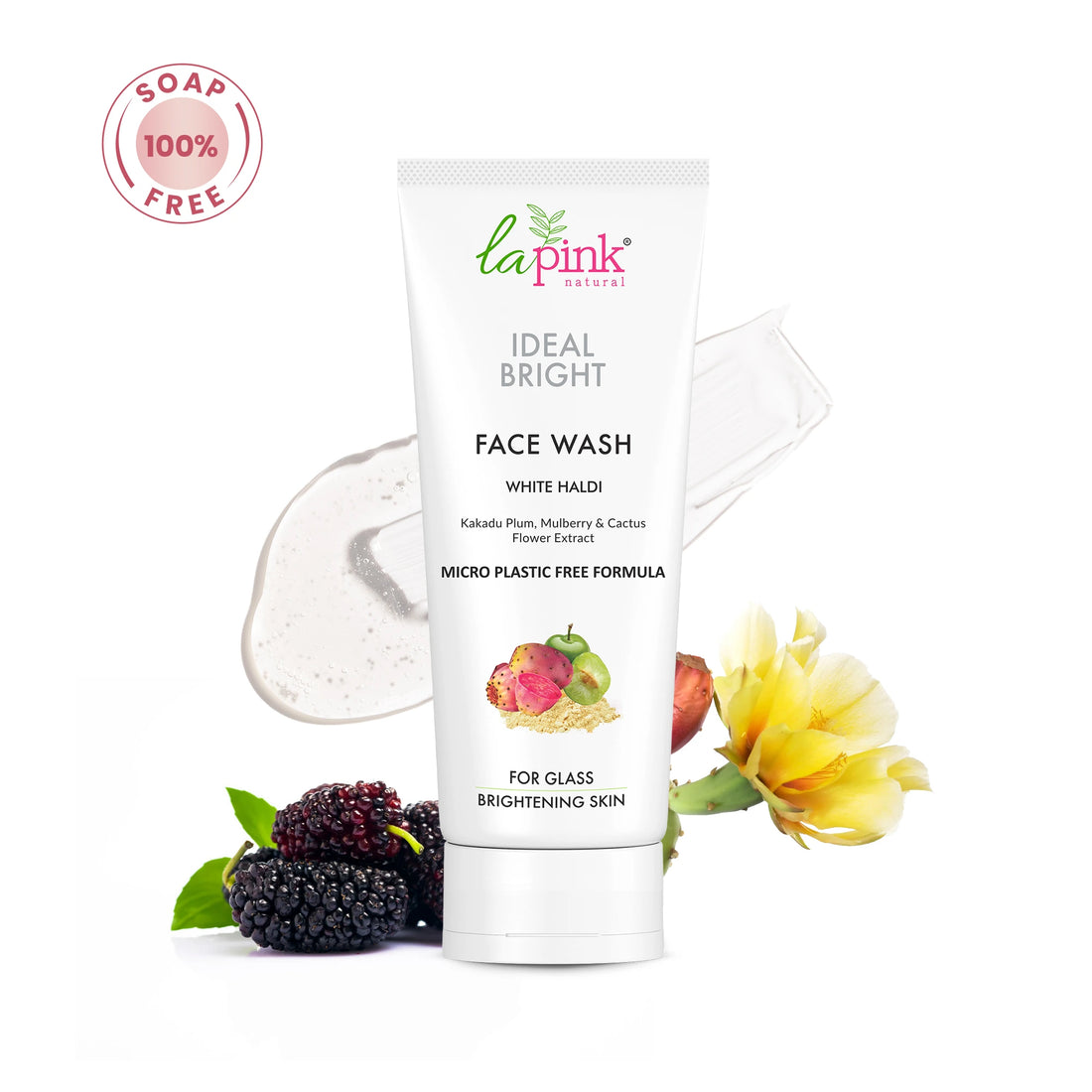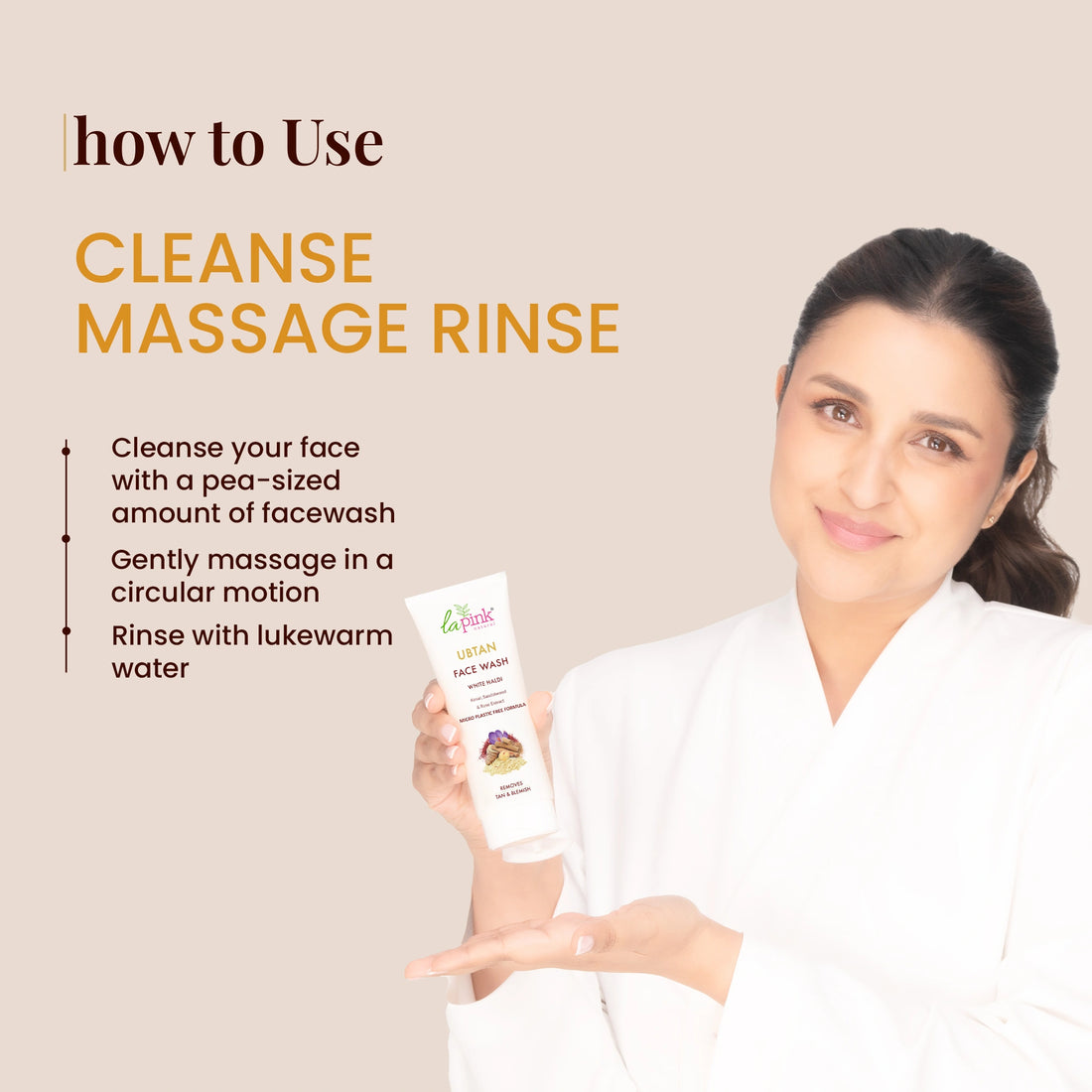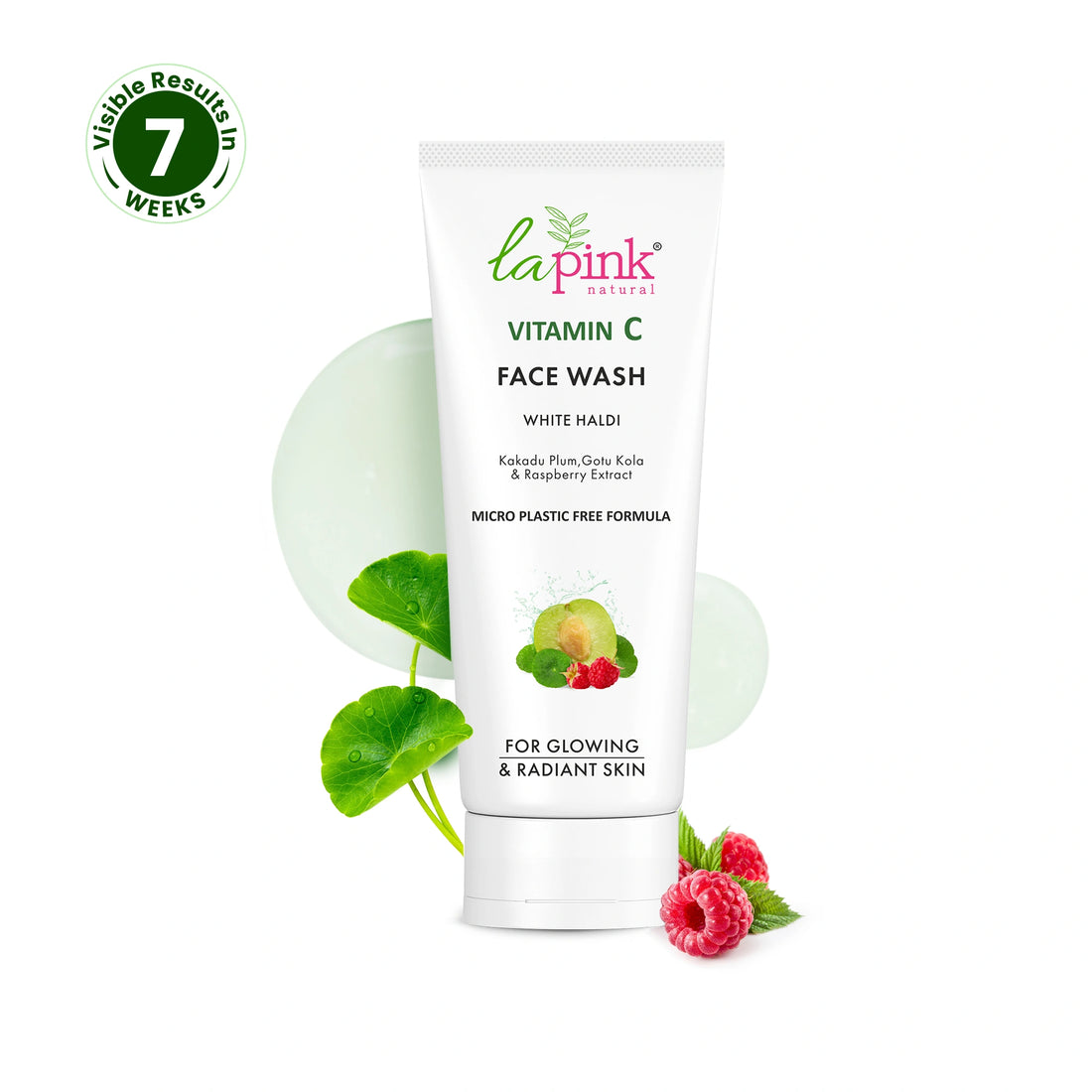
क्रिसमस पर पाएं ग्लोइंग स्किन – रोजाना इस्तेमाल की बेस्ट क्रीम
अनुक्रमणिका: सर्दियों में क्यों खो जाता है चेहरे का निखार? ग्लोइंग स्किन के लिए बेस्ट डेली क्रीम कैसे चुनें? क्या 'यंग फॉरएवर क्रीम' वाकई काम करती है? फेयरनेस क्रीम का...

Decyl Glucoside is a mild, plant-derived surfactant produced from coconut oil or palm oil and glucose. It cleanses well without stripping away natural oils, making it suitable for dry and sensitive skin. It is widely used in facial cleansers, baby washes, and shampoos to create a soft, creamy foam and is less likely to irritate than harsher surfactants such as sulfates. It is eco-friendly and biodegradable and is therefore aligned with clean cosmetics standards. It is broadly pH-compliant and gentle, which makes it suitable for both skincare and haircare applications, cleansing well without compromising the health of the skin barrier.
Chemical Class: Alkyl polyglucoside Chemical Class (Non-ionic surfactant)
Chemical Formula: C₁₆H₃₂O₆
Decyl Glucoside is a non-ionic surfactant within the alkyl polyglucoside (APG) chemical class. It has the IUPAC name decyl β-D-glucopyranoside and molecular formula C16H32O6. Decyl Glucoside is produced by reacting glucose with decyl alcohol, itself made from C10 fatty alcohol, to produce its hydrophobic alkyl group and hydrophilic sugar group-containing molecule. This form allows Decyl Glucoside to gently clean while being well-suited to skin. It is a clear to slightly cloudy liquid with water solubility.




Its amphipathic nature, provided by both its decyl (C10)-hydrophobic tail and its glucose-based hydrophilic head, is responsible for Decyl Glucoside's amphiphilic nature. This allows Decyl Glucoside to emulsify and sweep away oils and dirt without disrupting skin's oily barrier fiercely. Its mild interaction with both the oil and water phases provides thorough cleansing without compromising the oil barrier of the skin.
Decyl's reduced C10 chain provides both its cleansing power and skin compatibility. Shorter alkyl chain lengths have lower chances of denaturing skin proteins than longer ones (such as C12 and C14). This structural characteristic reduces barrier disruption and irritation risk, making it safer to use for sensitive, compromised, or baby skin care formulations.
The glucose moiety has multiple hydroxyl (–OH) hydrophilic sites available for hydrogen bonding with water. Those hydrophilic sites retain moisture on the skin's surface during cleansing. In contrast to harsh surfactants, which dry out skin, Decyl Glucoside's sugar head group allows for gentle skin interactions retaining moisture and leaving the skin feeling conditioned after cleansing.
Since Decyl Glucoside is not ionic, it does not have any charged groups like in sulfates. With its low charge, it has lower chances of reacting with skin proteins and disrupting skin pH. This neutrality of the structure contributes to reduced stinging, dryness, and sensitivity, and it is suitable for sensitive skin and suitable where frequent product use is intended.
It is resistant to hydrolysis within a broad pH spectrum of 3.5–10 in its β-glycosidic linkage of glucose to decyl alcohol. This chemical stability guarantees Decyl Glucoside maintains its integrity and functionality within diverse skincare formulations, maintaining cleansing effect and product shelf life even under hard conditions (such as alkaline cleansers or acidic exfoliants).
Cleansers (3-10%): Decyl Glucoside is employed as a mild surfactant in facial or body cleansers to take away dirt, oil, and impurities without stripping the skin of its moisture content. It's suitable for everyday use, and it is gentle to the skin.
Shampoos (5-15%): Decyl Glucoside in shampoos cleanses the scalp and hair without dryness and irritation. It produces a gentle lather to strip excess oil and residue, while retaining the natural softness and shine of the hair.
Body Washes (5-12%): In body washes, Decyl Glucoside cleanses the skin nicely, leaving it smooth and hydrated. Its very gentle character makes it ideal for sensitive skin, offering soothing, non-drying cleansing.
Facial Cleansers (2-5%): In facial cleansers, Decyl Glucoside provides mild yet efficient makeup removal, pollutant removal, and excess oil removal. Its non-irritant character is ideal for delicate skin, ensuring cleanness without stripping moisture.
Decyl Glucoside's gentle cleansing action reduces irritation, making it perfect for reactive, compromised, or delicate skin. It cleans gently without stripping valuable skin lipids, which helps retain barrier integrity. Suitable even for babies and eczema-affected skin, it reduces redness, stinging, and tightness common with aggressive surfactants such as sulfur-containing compounds like sulfates or soaps.
Decyl Glucoside's glucose head locks in moisture through hydrogen bonding with water instead of dehydrating skin like surfactants. This prevents dryness after cleaning and leaves skin feeling soft and supple. With its capability to cleanse without stripping hydration, it is perfect for dry skin cleansers, micellar waters, and gentle cleansing face and body lotions.
Decyl Glucoside produces a soft and rich lather that rinses clean without leaving any residue. This enhances user experience with cleansers by leaving users clean without feeling stripped. Its ease of foaming — without excess bubbles and harshness — makes it suitable for facial washes, shampoos, and bath products for comfort and mildness.
Made from renewable plant materials such as coconut and corn, Decyl Glucoside is environmentally friendly and biodegradable. Its manufacture and degradation have lower ecological impact than surfactants made by petrochemical origin. This is extremely attractive to formulations of eco-friendly and clean beauty cosmetics targeting environmentally responsible consumers prioritizing sustainability and environmentally friendly impact.
As typically mild, some users with extremely sensitive skin or impaired barriers will experience some level of irritation, dryness, or tightness from using cleansers with higher concentrations of Decyl Glucoside. Patch tests are recommended for users with conditions such as rosacea or eczema, particularly in combination with surfactant and actives posing potential irritation risks.
As creating a soft lather, Decyl Glucoside is less voluminous in foam than is strong surfactant sodium lauryl sulfate (SLS). Consumers habituated to rich, foamy cleansers may find foaming less satisfying. Blending Decyl Glucoside with other surfactants is often necessary to achieve foaming, which adds to product development challenges slightly for applications requiring heavy foaming.
At concentrations of Decyl Glucoside where it appears high in the product, it sometimes causes mild drying, especially to very dry skin and very sensitive skin. Without offsetting moisturizing auxiliaries such as glycerin and oils, its cleansing efficacy might slightly rob natural oils away. Treatments require careful formulation to counteract this side effect risk.
As mild as it is to skin, Decyl Glucoside irritates eyes if not well formulated and buffered. In cleansers for the face and baby shampoo under the eyes where Irritancy is at risk, formulators must balance concentration and pH very carefully to ensure comfort, even in no-tear or gentle eye-area cleansers.
Natural origin and its eco-friendly nature mean Decyl Glucoside is typically more expensive than synthesized surfactancy in the form of sulfates or solventless synthetics. This increases the cost of production and retail price in skincare formulations, potentially precluding its use in cost-sensitive, budget-friendly, or mass-market product applications where cost is the primary consideration.
Decyl Glucoside has one-of-a-kind capabilities beyond cleaning — it is a potent co-surfactant booster in skincare formulations. Blended with high-strength surfactants such as Cocamidopropyl Betaine and/or SLS, it softens the abrasiveness of such surfactants and increases mildness, rendering cleansers to be gentler to skin and hair. Its sugar-derived, non-ionic structure cushions irritation and enhances foam quality, generating rich, creamy lather for enhanced user experience. Decyl Glucoside is even used as a mild solubilizer to help to disperse essential oils, fragrances, or oil-soluble actives into water-based cleansers or micellar waters without the need for harsher-emulsifying ingredients. It stabilizes foam and reduces eye and skin irritation in multi-surfactant formulations, and therefore is typically incorporated in sensitive-skin shampoos, tear-free infant washes, and gentle micellar cleansers. This multi-functionality makes it a valuable and effective ingredient formulators trust to fine-tune product performance and skin comfort.
Decyl Glucoside is a mild, plant-derived cleansing agent made from glucose and coconut oil. It’s widely used in facial cleansers, baby products, and shampoos for its gentle cleansing properties without irritating or drying the skin.
Yes. Decyl Glucoside is one of the safest surfactants available. Its ultra-gentle, non-stripping formula makes it ideal for sensitive, allergy-prone, or compromised skin, including eczema and rosacea-prone types.
Yes. Decyl Glucoside is a sulfate-free surfactant that produces mild foam without the harshness of sulfates like SLS or SLES. It’s a top choice in clean and natural formulations for gentle cleansing.
Yes. While it’s mild, Decyl Glucoside effectively removes excess oil, makeup, and impurities without disrupting the skin barrier—making it perfect for daily use on oily or acne-prone skin.
Decyl Glucoside is biodegradable, non-toxic, and derived from renewable sources like corn and coconut. Its gentle nature and eco-credentials make it a favorite among sustainable and clean beauty brands.
Yes. While its foam is softer and creamier than traditional sulfates, it provides a satisfying lather that cleanses effectively—without causing tightness, dryness, or irritation.
Yes, you can. Because it’s so gentle and non-stripping, Decyl Glucoside is suitable for daily use in facial cleansers, body washes, and shampoos—even for babies and those with ultra-sensitive skin.

अनुक्रमणिका: सर्दियों में क्यों खो जाता है चेहरे का निखार? ग्लोइंग स्किन के लिए बेस्ट डेली क्रीम कैसे चुनें? क्या 'यंग फॉरएवर क्रीम' वाकई काम करती है? फेयरनेस क्रीम का...

সূচিপত্র ভূমিকা: প্রতিদিনের ক্রিমের গুরুত্ব কেন Daily Face Cream এত গুরুত্বপূর্ণ ত্বকের ধরন অনুযায়ী ক্রিম নির্বাচন La Pink-এর সেরা Face Cream Collections ক্রিমের আগের সঠিক স্টেপস ক্রিমের পরে প্রয়োজনীয় Protection...

বিষয়সূচি ভূমিকা প্রথমেই বুঝে নিন নিজের ত্বকের ধরন ত্বকের উজ্জ্বলতা আর রঙের ভারসাম্য আনতে ব্রাইটেনিং ক্রিম La Pink Ideal Bright Day Cream & Night Cream Combo ক্রিম কেনার আগে উপাদান...




























































We use cookies and similar technologies to provide the best experience on our website. Privacy Policy



